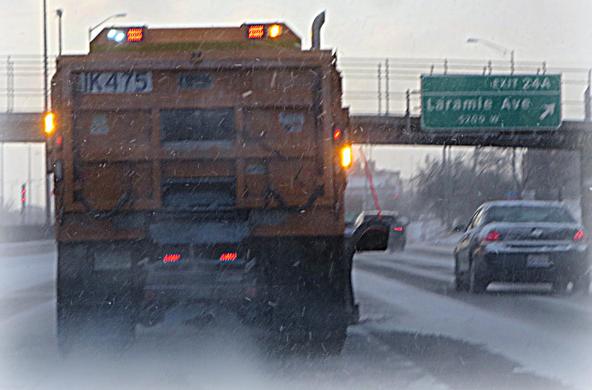When my children were new teenaged drivers, my husband took them to a big, empty parking lot in a snowstorm and put them behind the wheel. He taught them how to control a skid, recover from a fishtail, and brake in slippery conditions. These lessons were helpful, but they did not alleviate my worry about them driving in wintry weather. I always thought, “I’m sure glad we have road salt!”
Once viewed as a cheap, harmless deicer, we now know that road salt pollutes the environment
Work done at Cary Institute and other research organizations has revealed that road salt doesn’t just wash off roads into streams and rivers, eventually disappearing into the sea. Instead, much of it is retained locally, where it accumulates in lakes, sediments, soil, and, perhaps most troubling, in groundwater.
When we tallied the many sources of salt in the watershed feeding Wappinger Creek, a stream that runs through Cary Institute’s property in Millbrook, we discovered that over 90% originated from road salting. Water softeners, sewage, and naturally-occurring salts account for less than 10% of salt in the stream.
The discovery of increasing salt in fresh surface waters is concerning, and the problem is widespread
A confounding trend that we observed early on: not only do we find salt in our stream in winter, as you’d expect, we also find significant salt levels during summer. In fact, the average concentrations in summer exceed winter concentrations.
Why is this? Every winter, salt applied to roads runs off the pavement and percolates into groundwater, either directly through soils or through fracture zones near roads. In the summer, when thirsty trees take up most of the rain that falls onto the landscape, streams are largely fed by this salt-laden groundwater.

High concentrations of salt during the summer are problematic because this is when fish, insects, bacteria, and other organisms are active. Rising salt concentrations could pose a hazard to freshwater organisms that cannot survive in brackish conditions.
Salty groundwater can also harm people. Road salt has been discovered in drinking water supplies, including wells and reservoirs, throughout the northeastern US. This is a health concern for people on low-sodium diets.
Salinizing freshwaters is a problem years in the making; there’s no quick fix
Seriously curtailing road salt use is the only way to reverse the issue. We can’t undo the consequences of more than half a century of heavy road salt application, but we can seek strategies to reduce use and help prevent the problem from becoming much worse in years to come.
Efforts to develop low-salt treatments to keep winter roads navigable are in the works. For example, a recent study found that pretreating roads with brine reduced salt flowing off roadways by 45%. That’s a big difference. We need to keep thinking like that.






